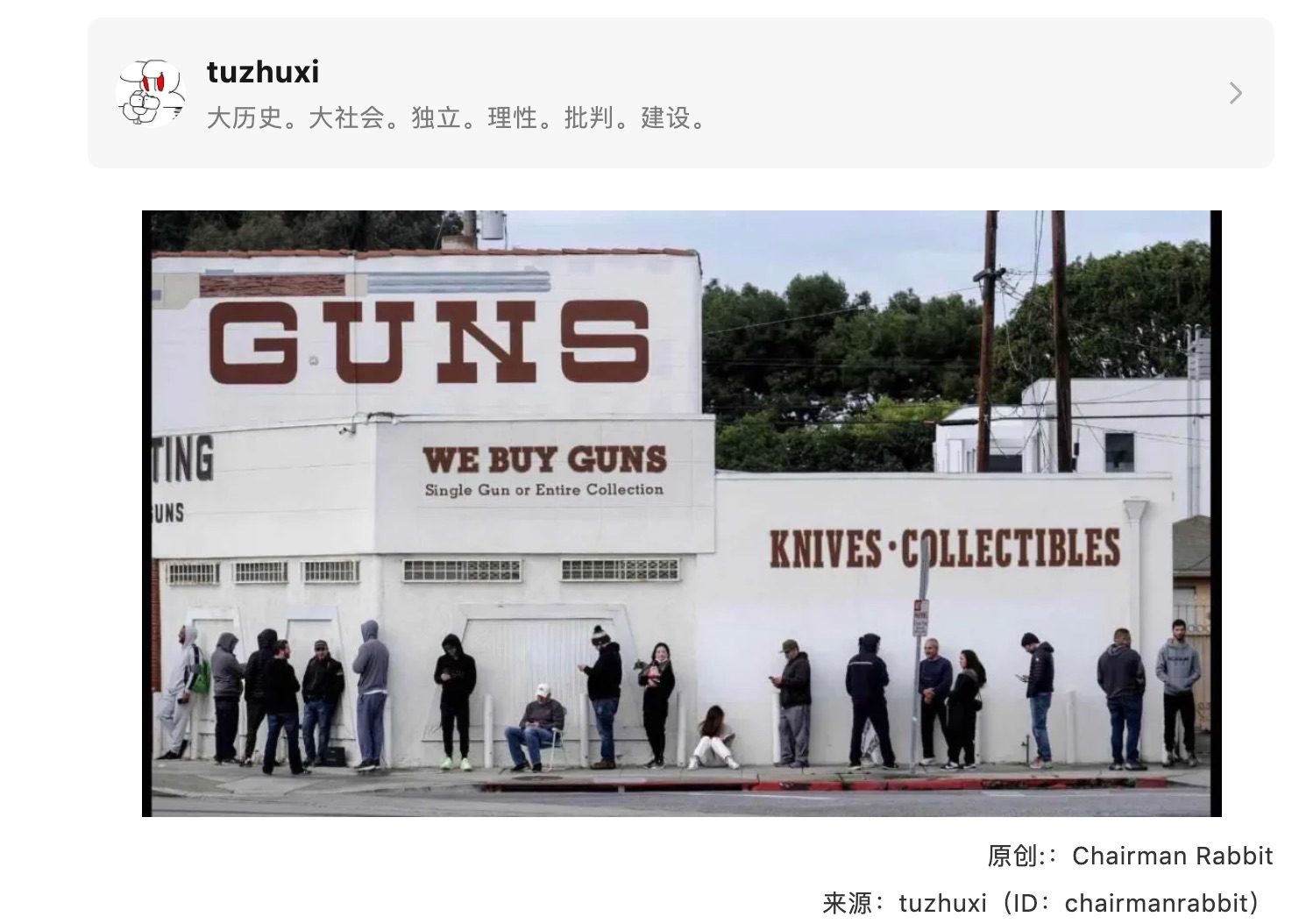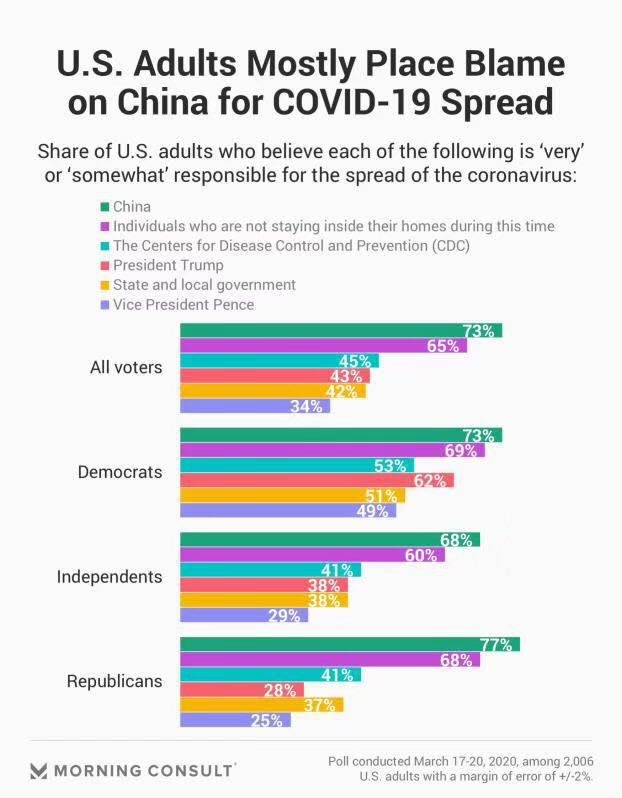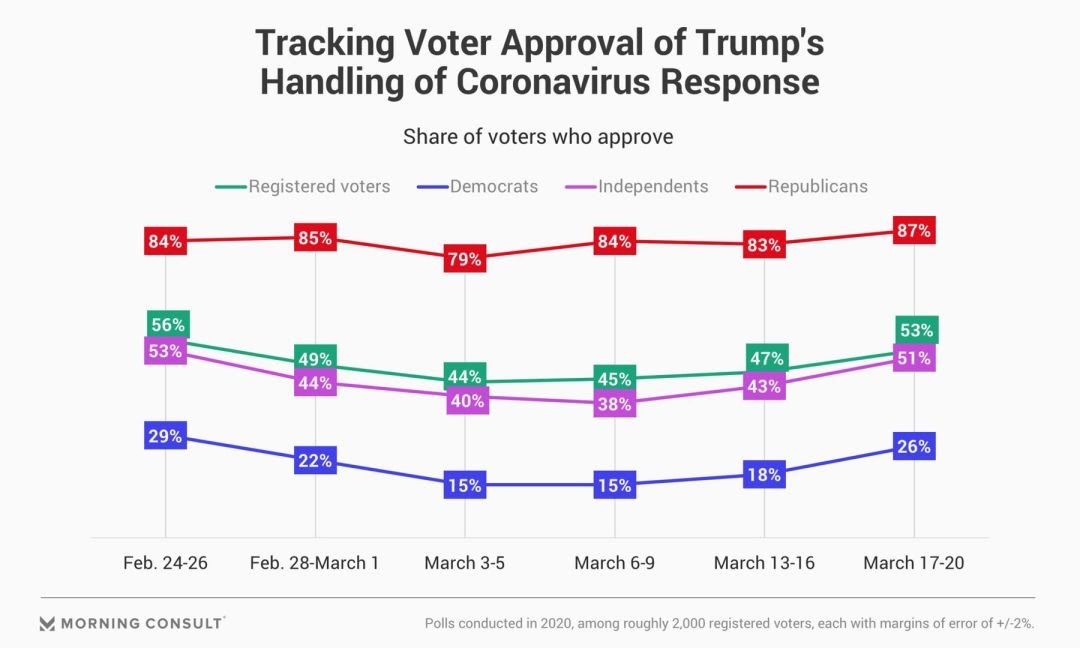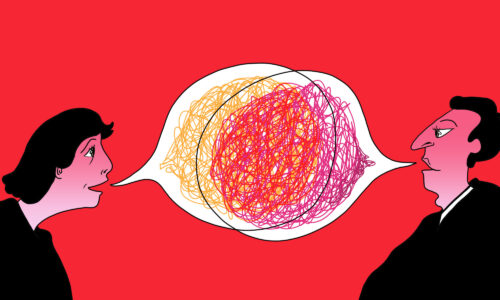Chinese commentary: COVID-19 may ravage America, but it won’t dent American self-confidence

Chairman Rabbit (兔主席 tù zhǔxí) is the popular WeChat account and pseudonym of Rèn Yì 任意, the grandson of noted Communist Party reformer Rèn Zhòngyí 任仲夷, who regularly writes about politics, international relations, and history. On March 27, the platform published a fascinating through-the-looking-glass portrait of how certain America-watchers in China are interpreting America’s opinions toward China during COVID-19.
“It is hard for an American to admit that the Chinese government is more concerned with its people’s well-being and can protect their interests better than the American government,” Chairman Rabbit writes. “If there is one big consensus among politicians of both parties, it is to crush, contain, and demonize China. This is one of the few politically correct opinions that both parties can agree on in Washington these days.”
In the author’s mind, the U.S. is giving China way too hard a time and not respecting the job the country has done in cleaning up COVID-19. Countries that don’t follow the China model in combating COVID-19, the author argues, have suffered. At the same time, the author says that most Chinese people would lay the blame of COVID-19 at the feet of local government officials, and perhaps the people of Wuhan who eat exotic game.
In the end, the writer envies the U.S.’s self-confidence to take these hardships in stride. America’s unshakeable faith in its system is something China needs to work toward, according to the author: “In the 21st century, a great power game between China and the United States is inevitable. In order to become a great power like the United States, China must construct the most powerful and most attractive political civilization.”
I believe that America’s COVID-19 cases will surpass Europe’s and it will become the world’s most infected country. But that eventuality will not dent Americans’ confidence and love of their system in the least.
In translating this article, we have omitted the first section, which looks at American public opinion on the coronavirus. The only note worth mentioning about this part is that it relies on opinion polls, whereas the author relies on hearsay in subsequent parts regarding Chinese sentiment.
This article has gone mega-viral, far exceeding Tencent’s 100,000 view-count ceiling. With more than 33,000 shares, it’s likely this article has reached an audience in the millions.
UPDATE: A previous version of this post described Chairman Rabbit as “anonymous.”

American thinking on China’s and Trump’s epidemic containment
美国民众对中国抗疫和特朗普抗疫的真实想法 (měiguó mínzhòng duì zhōngguó kàng yì hé tè lǎng pǔ kàng yì de zhēnshí xiǎngfǎ)
Originally published on Chairman Rabbit in two parts (subsequently compiled on the platform Qǐdiǎn Rénwén 起点人文)

If you asked Chinese people, “Who is most responsible for the outbreak in China?”
The poll results would definitely be consistent with national values and character.
1. The people responsible for the virus
a) Blame those who eat and handle wild animals. In the early days of the epidemic, people were very angry at those in Hubei who ate exotic game foods, including bats, and believed that this bad habit was to blame for the spread of the virus to humans.
b) For a period during the middle of the epidemic, even more people paid attention to strange conspiracy theories, including a theory that the virus was accidentally leaked from the Wuhan Institute of Virology. For a bit of time, there was extreme interest.
c) From about the end of February / early March, attention shifted to the “American origin theory.” Whether this argument is rational and logical, or simply an anti-American sentiment (just as Americans push the problem onto China), it’s reflective of Chinese people’s antipathy against the U.S. But can this antipathy be placed within the category of reason? Are ordinary Chinese really placing blame for the COVID-19 outbreak on the U.S.? I believe that Trump knows, deep down, how it happened. However, to this day, most people will also support strong supervision of the exotic animal market to forever prevent a virus from forming again through such a channel.
2. Individuals who do not observe discipline and rules
Chinese people do not like the kind of individual who is undisciplined and doesn’t follow rules. But these type of people are relatively rare in China, because in our system people adapt and behave uniformly, and are more compliant. Since large-scale quarantine began in late January, most people have strictly abided by the rules, with just a few exceptions. In fact, the more defiant of those seem to be those recently returned from abroad. But at this time, the domestic spread of the epidemic has been completely controlled, and people have no reason to place any blame on ordinary people who are by and large considered the victims.
3. Government / public power
Here lies the core of Chinese complaints. The public believes that essentially the people who must shoulder responsibility include: Hubei / Wuhan Health Commission, local police in Wuhan (who reprimanded the whistleblowers), leaders of the Hubei / Wuhan government and heads of relevant departments, as well as the Chinese Center for Disease Control and Prevention. The ones with public power are responsible. Aside from the disgust at the wild-animal market, and general anti-U.S. antipathy, Chinese people place most of the real responsibility on the Chinese government. In China’s long history, the government ultimately has the most power, and is also the one to bear ultimate responsibility.
Aside from the disgust at the wild-animal market, and general anti-U.S. antipathy, Chinese people place most of the real responsibility on the Chinese government.
One can assume that if China conducts such a poll, 80% to 90% of the people may choose to put most of the blame on various levels of government and functional departments.
Herein lies the difference between China and the U.S. [Ed’s note: The American people tend not to blame Donald Trump, but rather, China — see charts below, from the article’s first section.]
COVID-19 epidemic prevention and control: The situation from China to the world
1. The story of the epidemic in China
The following is my opinion, which has not changed since late January.
a) China experienced SARS. Due to the initial late reporting and subsequent concealment, it paid a huge price. From top to bottom, from government to society, from leaders to ordinary citizens, nobody wants a repeat of the SARS saga.
b) SARS had a case fatality rate (CFR) of 9.6%. Due to the lack of understanding of influenza, SARS is the main reference for Chinese people to understand respiratory infections.
c) Because the CFR is as high as 9.6%, the highest level of “zero tolerance” prevention and control (same as aviation safety) is accorded for SARS.
d) Due to the huge fear of SARS, officials in December were very vigilant about whether unexpected unknown viruses should be understood as a type of SARS. If it is really a SARS-like virus, early awareness and action can avoid a disaster. But if it is not a SARS-like virus, then any exaggeration and links to SARS may cause unnecessary social panic and other costs. This was the difficult choice in the face of an unknown virus.
e) China struggled with indecisiveness for some time in the first half and middle of January, but due to its special experience with SARS, it eventually chose the most conservative path: plan for the worst, and assume its severity is comparable to SARS. When the epidemiological characteristics of the virus were not yet fully understood yet, and when the outbreak was relatively early, with only a few isolated cases (January 20-22), a series of strong actions were taken, including strong instructions from the top leaders, initiating a top-level response for public health. The city of Wuhan and Hubei Province were placed on lockdown, and the largest and most stringent non-medical intervention (NPI) method in human history was implemented. Everything was supplemented by the national system and various new technologies.
f) It was only after this that China gradually gained an understanding of COVID-19, including its ability to spread asymptomatically, its route of transmission, its long incubation period, its impact on different populations, and its mortality rate.
g) Through comprehensive epidemic prevention and control measures, it took China more than a month (from mid- to late-January to the end of February) to basically control COVID-19, although it paid a considerable socioeconomic price. But in the eyes of the government, all this was necessary.
It took China more than a month to basically control COVID-19, although it paid a considerable socioeconomic price. But in the eyes of the government, all this was necessary.
h) Throughout the epidemic, the government made the utmost effort to protect and keep open the public information sphere. This allowed the media to report to its full potential. Incidents and disputes during this period elicited a quick response, with responsible government personnel dealt with accordingly in order to alleviate public dissatisfaction. Historically speaking, I think this was unique.
i) The two months of epidemic prevention was a big test for the Chinese government, society, and people. United in will and working in unity, this battle was tough, and we won beautifully. On a 10-point scale, I grade the Chinese government a 9 to 9.5. This is not an assessment made in hindsight — I already thought so in late January, and the response of various countries just confirmed my view at the time.
j) After that, starting from South Korea, other countries have followed the Chinese model in varying degrees, according to their national conditions. The deeper, more systematic, more dedicated a country in replicating the China model, the better the results. Those who did not consult Chinese model experienced a major outbreak.
k) The reality is that most countries have completely wasted weeks of valuable time that China bought for them through powerful prevention and control, as well as the valuable experience brought by the accumulation of scientific and technological data from China’s epidemiological research. And that’s how so many countries, without exception, are mired in difficulty.
How Americans see the story of China’s epidemic prevention
Because of the flaws in the Chinese system of governance, a critical multi-week delay allowed the outbreak to get out of control. The Chinese government allowed five million people to leave Wuhan, in turn leading to the global spread. In fact, in pretty much any country around the world, sealing off a city is an incredibly severe step. But in the U.S. narrative, China closed down Wuhan too late.
Americans began to advocate for the success of the “democratic model,” exemplified by South Korea, Hong Kong, Taiwan, and Singapore. What goes unmentioned is that:
1. South Korea is in fact following China’s large-scale NPI model;
2. Hong Kong and Taiwan are both dominated by right-wing politics. They combine anti-pandemic work with anti-China sentiment and use the latter as a tool to drive public efforts to fight the coronavirus. This method works the same way it does when right-wing extremists in Europe leverage the outbreak to fuel backlash against globalization and European integration;
3. Epidemic prevention in East Asian countries relies on East Asian cultural elements, like civil obedience, collectivism, the expectation of big government (Hong Kong being an exception, of course).
Overall, Americans need to maintain the narrative that democracies are highly resilient, totalitarian states create epidemics, and even if they are able to eventually control their spread, there are huge political, economic, and social costs for the rest of the world. Produced by these extreme countries, the extreme countries then use extreme means to fight the epidemics, ultimately “wreaking havoc” on other non-extreme countries.
Therefore, all other innocent democracies have been caught off guard by the Chinese government’s delay, lack of timely sharing of information, and so now are paying a heavy price.
What’s more, all of China’s overseas epidemic prevention assistance is not motivated by humanitarian concerns but rather a manifestation of China’s ambition to use the epidemic to build a bi-polar world and achieve global political hegemony.
Overall, this narrative is shaped to help prove that the American model, values, and future are all OK. The U.S. story is that “China’s cover-up prevented America from responding to COVID-19,” so the buck stops with China.
In pretty much any country around the world, sealing off a city is an incredibly severe step. But in the U.S. narrative, China closed down Wuhan too late.
Beyond that, it’s worth noting that:
During the epidemic, both mainstream media and social media platforms [in China] had a large degree of freedom. American media does not discuss this diversity of opinion in China, but rather perpetuates the stereotype of comprehensive information control. At the same time, while Chinese are making strict demands on our government, these demands will be amplified 100 times by U.S. politicians and the media, in turn becoming tools to attack and mislead the world about China.
Demonizing China to maintain American confidence
At the beginning of March, when America was a bystander to the outbreak, it might have felt irrelevant and a little more objective. Now that the outbreak is in the U.S., as a witness, it’s not the same. You can’t be objective. It is hard for an American to admit that the Chinese government is more concerned with its people’s well-being and can protect their interests better than the American government (though Americans believe that everything is done on their own).
Regardless of party, about 7 in 10 Americans think China is responsible for the outbreak in the United States.
It is true that there are Democrats and Republicans, right wing and left wing, in America. If there is one big consensus among politicians of both parties, it is to crush, contain, and demonize China. This is one of the few politically correct opinions that both parties can agree on in Washington these days.
The same is true for Americans. (Note: when I talk about “Americans,” I don’t mean Americans holding U.S. passports in a broad sense, but “narrow-minded,” traditional, cultural, and “archetypal” Americans — white people who define mainstream American values.)
Demonizing and belittling the Chinese system and government is fundamental to maintaining confidence in the U.S. system. If a “problem” is imported from China and the U.S. government cannot solve it through public governance, the problem boils down to complaining about China. So, drug use (and death) in the U.S. is not a problem of drug culture or governance, but of Chinese exports of fentanyl. The decline of American manufacturing is not because the U.S. corporate/labor model is not up to date with global competition, but because of unfair competition from China.
In short, all problems can find a convenient scapegoat: China.
In this collective consciousness lies the confidence of the American system, that the country is on the right path, that its culture is just fine. Everyone will defend this belief and nothing can shake it.
America’s strength lies not in its warships, aircraft, artillery, or multinational corporations, but in its strong, confident values.
This is really the soft power that permeates the whole of society. It is such a system that, even after being conquered by COVID-19 and suffering tens of thousands of deaths, still feels that it has the world’s best government and system. America’s strength lies not in its warships, aircraft, artillery, or multinational corporations, but in its strong, confident values.
“The people have faith, the nation has hope, and the country has strength” — this is the social ideal we pursue.
But if there’s one country on Earth that’s achieved this ideal, it’s the United States.
I believe that America’s COVID-19 cases will surpass Europe’s and it will become the world’s most infected country. But that eventuality will not dent Americans’ confidence and love of their system in the least.
In the 21st century, a great power game between China and the United States is inevitable. In order to become a great power like the United States, China must construct the most powerful and most attractive political civilization. The “four self-confidences” [a Xi Jinping political theory that calls on the Party to strengthen confidence in China’s path, its guiding theories, its political system and culture] is no longer a vision and pursuit, but a cultural core that can be deeply rooted in the hearts of people, for everyone to believe and implement. There is much work to be done to achieve this.








